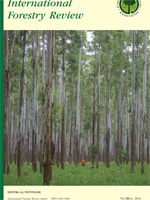Non-timber forest product (NTFP) commercialisation can have both detrimental and positive effects on the livelihoods of indigenous peoples yet there is a paucity of empirical studies from which to draw conclusions, especially when economic activities are linked to traditional use and knowledge. Based on research conducted in arid areas of north-western Namibia with indigenous Himba communities, this paper assesses the social and economic effects of commercialising the traditional perfume plant Commiphora wildii, used by Himba as part of a daily personal care ritual. Results show improved access to food, education and health care as a result of the income gained and increased benefits to women, but also illustrate the complexities and inter-related nature of many components and the difficulties of drawing generalised conclusions. These results concur with literature showing that NTFP commercialisation is an important strategy to diversify livelihoods and thus decrease vulnerability to climate variability and food insecurity. Although some negative effects are reported, we conclude that the enterprise contributes to the social and cultural integrity and well-being of the harvesters. We emphasise the importance of examining initiatives on a case-by-case basis and of being especially attuned to the unique circumstances of indigenous peoples in remote regions who remain one step removed from monetary economies.
How to translate text using browser tools
1 December 2016
Commercialising a Perfume Plant, Commiphora wildii: Livelihood Implications for Indigenous Himba in North-West Namibia
F.B. Galloway,
R.P. Wynberg,
K. Nott
ACCESS THE FULL ARTICLE

International Forestry Review
Vol. 18 • No. 4
December 2016
Vol. 18 • No. 4
December 2016
gender
INDIGENOUS PEOPLES
livelihoods
non-timber forest products
traditional knowledge




